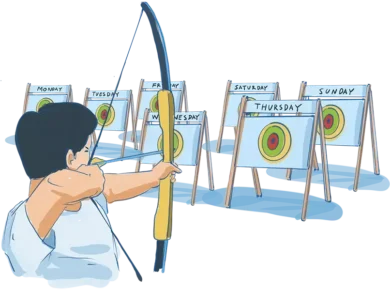The CPM project management method (Critical Path) is a deterministic method that allows the control of the time and cost of execution of a project, using only one duration of time associated with each activity, which leads to a very good accuracy. This method is very used in construction projects because of their resource dependency and their accurate time estimates. By using a network graphic model, provides an overview of the project and allows determining the total duration of its implementation. It takes into account only the time parameter.
Specific features of CPM Project Management method
- It is deterministic in nature, based on a single estimate of duration
- Uses a network with activities on edges and events in nodes, the whole network being oriented on highlighting activities;
- Use only time as a parameter; only an estimated time that represents the normal duration of the project.
What is the Critical Path of a project
- A network graph mentions a start and an end event of the project.
- Between the start and the end event there are several paths, consisting of a succession of activities called complete paths, which have different durations.
- Of these, the complete path with the longest length, obtained as the sum of the durations of activities between the initial node and the final node, is called the critical path and will determine the time of the project.
- The critical path represents the minimum possible duration of execution of the entire project, in which the minimum and maximum term of the events coincide. If the activities on the critical path are delayed, then the whole project will be delayed.
Important aspects of CPM
- Each activity corresponds to a start event and an end event.
- Activities that are on the critical path are called critical activities and do not have time reserves, which means that they must be executed on schedule so as not to jeopardize the achievement of the final deadline of the project
- Activities that are not located on the critical path have certain periods of time, called time reserves, in which their execution can be extended without jeopardizing the deadline for completion of the project.
- Activities that cannot be started until after an event will be preceded by activities that need to be completed in that event.
- The time reserve is the time difference between the deadline required to comply with the critical path and the date on which an event is actually reached or an activity ends.
- Technological dependencies between activities are given by financial, technological, material and / or personnel constraints.
- The graphical representation that photographs the set of activities of a project, as well as the dependencies between them, is called a network or graph.
- Each circle (node) of the network represents an event of the project, in terms of start or end of one or more activities.
- Each oriented edge, which has its origin in one event (start) and destination in another event (end), represents a project activity.
- The process involves the completion of activities that consume time and resources, being logically interconnected with each other through events.
Steps for applying the CPM
1. Analysis of the project structure and establishment of the initial project data
- The list of activities is drawn up and the initial conditions regarding the development of the project are determined
- For each activity the start date, duration and end date are established
- The interdependencies between activities are determined based on the activities that precede, are carried out in parallel or the considered activity.
- The resources and technology of the project are identified and analyzed
2. Graph construction based on the interdependence between activities
On a network type graph are represented the events that mark the beginning and the duration and the end of an activity. Then the network is drawn respecting the following:
- The order of representation of activities in the network, must fully respect the order and dependencies imposed by the technological process
- For each activity there is only one edge between two nodes
- For each node we have a predecessor edge and a successor edge, except for the initial and final node
- Two edges are not accepted between two activities (a fictitious activity with zero duration is introduced)
- For ease of traversing the graph it is desirable not to encounter edges intersections
- The nodes (events) of the network are numbered, and above the edge (activities) is the name of the activities and / or their time durations. An activity starts in a node and ends in a node
- The event corresponding to the start of the first (first) activity in the network is called the initial event of the project, and the one corresponding to the completion of the last (last) activity in the network is called the final event of the project. It is not a scale construction and the distances and angles are chosen to create a clear graph
- The network must be fluent and show the direction of the process.
Restrictions in drawing a network type graph
- A project can have only one initial and one final event
- Only two activities are allowed between two nodes
- Loops / circuits are not allowed
- Fictitious activities are not accepted
3. Calculation and allocation of time intervals
- for events the minimum and the maximum term at which the event is reached and respectively achieved
- for activities the earliest and the latest term of the beginning of the activity and respectively earliest and the latest end date of the activity
Between the beginning and the end of the project there are several paths. The one with the longest length is the critical path.
4. Evaluation and optimization of the initial program
At this stage some of the following measures can be taken for the project to meet the required conditions:
- Allocation of additional resources
- Taking technological measures
- Changing project technology
- Redistribution of resources from non-critical to critical activities
- Finer structuring of activities
- More precise control of resource consumption
- Postponement of the start of the project
- Maintaining the starting moment of the project and extending the total duration of the project by withdrawing some resources and using them in another process
For the operative management of the project a Gantt Chart can be built to illustrate the project schedule. The duration of each activity is represented as a line and is placed in the graph corresponding to the minimum term of starting the activity. The critical activities and non-critical activities should represented with distinct lines.






